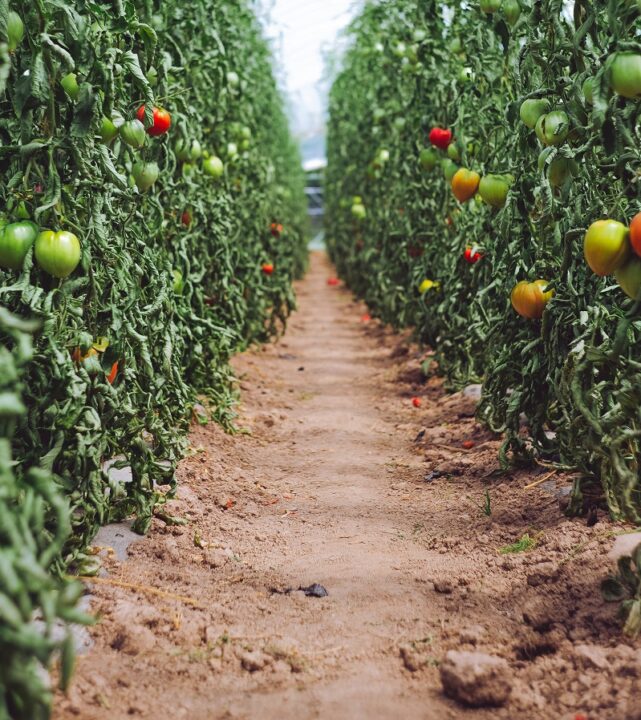Spotlight On Food Safety
Since the 2006 E. coli outbreak in spinach last year, the spotlight has been on growers and what they can do to make food safer. At the Ecological Farming Association Conference held in Monterey County, CA, in January, growers, buyers, and government officials met to discuss the possible ramifications of some of the new Good Agricultural Practices (GAP) that Western Growers (WG) has put forward.
During the “Leafy Greens and Beyond” panel, Melanie Beretti, program director at the Monterey Resource Conservation District, presented results from a recently completed grower survey about food safety and environmental protection. The growers who responded to the survey represented about 145,000 of the irrigated row crops along the Central California coast.
“One great thing about the survey was that we found that 85% of the respondents had adopted at least one or more conservation measures to protect the environment,” Beretti said. “But unfortunately, a lot of growers had been asked by buyer representatives to remove some of those practices for food safety reasons and, so far, 32% of these respondents have done that.”
Although WG and government officials are still hammering out plans for GAP, so far it seems that many of the practices being proposed for the Leafy Greens Marketing Agreement have put conservation protection practices and food safety issues directly at odds with each other, some growers say.
One GAP proposal, for instance, requires growers to eliminate wildlife around their farms or to erect fences around their fields to keep all wildlife out, including deer. Another proposal says that growers must remove non-crop, riparian vegetation around the perimeters of their fields.
The act of removing riparian habitat around the fields could actually cause more harm than good, since many of these grassy or vegetative areas are used as filters to absorb pesticide residue, which keeps the crop protectants from flowing into nearby water ways, said Chuck Benbrook, chief scientist at the Organic Center in Oregon.
Quality Control Issues
The problem that growers are facing now is that when large corporate buyers send their quality control people out into the fields, their assumption is that everything has to look clean and orderly in order to be healthy.
“A lot of these food safety management people who are studying the issue aren’t looking at the whole picture,” Benbrook said. “Many of them are lab technicians who want to prevent contamination by sterilizing everything.”
Right now, all of the proposed food safety practices are voluntary, but since so many large buyers wield so much clout, many growers are complying with the new food safety practices because they don’t want to lose business, said Bob Martin, general manager of Rio Farms, one of American Vegetable Grower’s Top 100 Growers located in King City, CA.
So far, smaller organic growers, such as Judith Redmond, co-owner of Full Belly Farm, Guinda, CA, haven’t been too impacted by the GAP proposals.
“At the moment, the (GAP) proposals don’t affect us because they mostly affect larger growers who sell to processors, but if these practices become mandatory for everyone, it could impact every single farmer,” Redmond said.
Right now, the federal government is looking at possible legislation to amend the Farm Bill that would require all growers to follow specific food safety practices in the field. “If this happens, then it will potentially raise prices for consumers of these products,” Redmond said.
If the GAP proposals end up becoming law, many of the rules will be impractical, if not impossible, for smaller growers to implement, Redmond said.
One regulation, in particular, would require growers to do field audits every time they harvest a crop. “This may be practical for farmers who have 300 or 500 acres of broccoli and harvest it all at once, but for a grower like me, who will harvest broccoli five times a week, for months at a time, it would be very difficult,” Redmond said.
Redmond also has hedge-row plantings along the sides of her fields, which she says are important for wildlife and for maintaining beneficial insects.
“A lot of people who audit for food safety have concerns about wildlife. It’s true that there’s a risk of cows carrying these pathogens, but to say that we need to remove hedge rows to keep all wildlife out, like deer, there’s no scientific evidence to back that up,” Redmond said.
In an informal test, Martin of Rio Farms recently collected 24 fecal samples of deer from hunters and had them tested for E coli. All of the tests came back negative. Next year, Martin said he may try to get a larger range of samples.
Since almost all small and large growers are already following strict food safety protocols, such as checking fields on a regular basis and testing for water quality, consumers and processors also need to take responsibility for food safety, Redmond said.
“There are problems in the cold chain when you have consumers driving around with bagged salads in hot cars that get stuck in traffic when they’re out doing errands,” Redmond said.
“If you look at the epidemiology of human illnesses from the 2006 outbreak, you’ll notice that the majority of people who got sick from bagged spinach consumed the product on the 15th, 16th, or 17th day after the product was shipped,” Benbrook said. “This suggests to me, as an industry, that until we figure out more precisely what’s causing these problems, the fresh cut processors should have a voluntary four day reduction in their use-by dates, from 16 days to 12 days,” Benbrook said.
Even if fresh-cut processors don’t reduce their “use-by” dates year round, they could at least consider reducing them during the summer months, since that’s when most of the outbreaks occurred, Benbrook said.
“I’ve talked to several food safety experts, and they say that if we’d had this reduction in the “use-by” dates already, most of these outbreaks wouldn’t have occurred,” Benbrook said.









